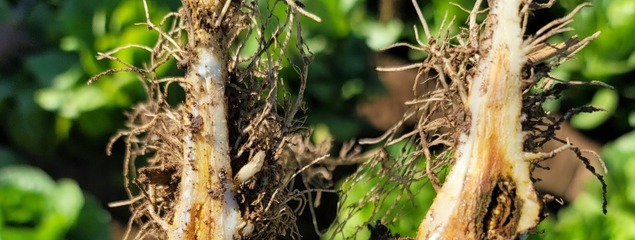
Plant Disease Management
Impatiens Necrotic Spot Virus (INSV)
Management Practices
Currently, there is no direct cure for INSV but there are several different control methods for reducing the incidence rate of the virus. Effective management of INSV involves monitoring thrips populations, implementing cultural controls to reduce their numbers, and using targeted chemical treatments to control the vector and prevent further spread of the virus. The best way to manage INSV is to prevent it from spreading in the first place by monitoring western flower thrips populations and getting rid of them before they can become a problem. Maintaining a clean cropping system all season long by getting rid of weeds both in and around produce fields is crucial in reducing the spread of INSV and its vector because they may serve as reservoirs for thrips and the virus. It is easy to underestimate the true amount of thrips on a plant due to their small size and cryptic nature which is why through scouting for these pests is another important method for reducing the incidence rate for INSV. High-risk areas previously affected by INSV and surrounding fields should be aggressively treated early with appropriate insecticides as a preventative treatment for secondary infection.

